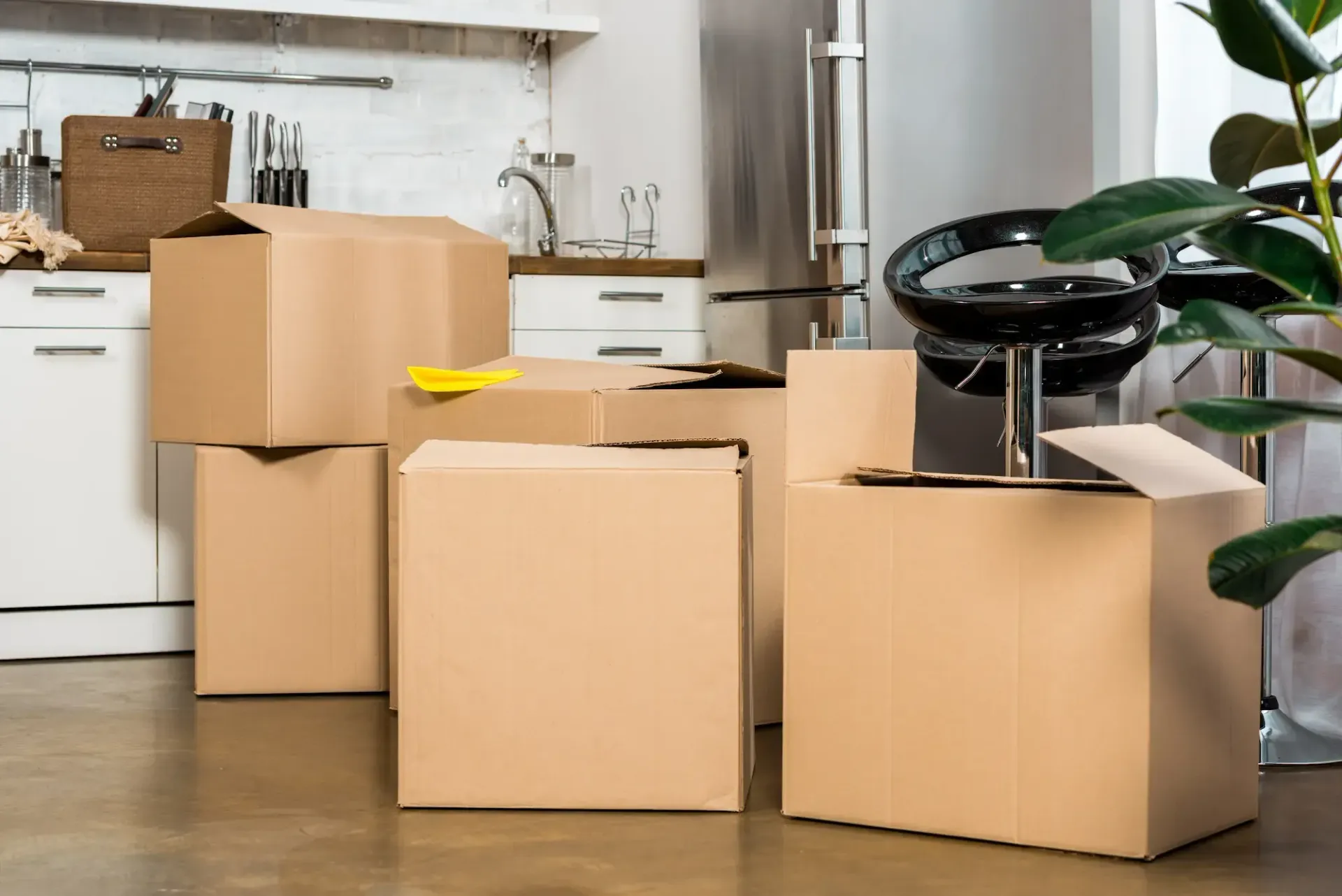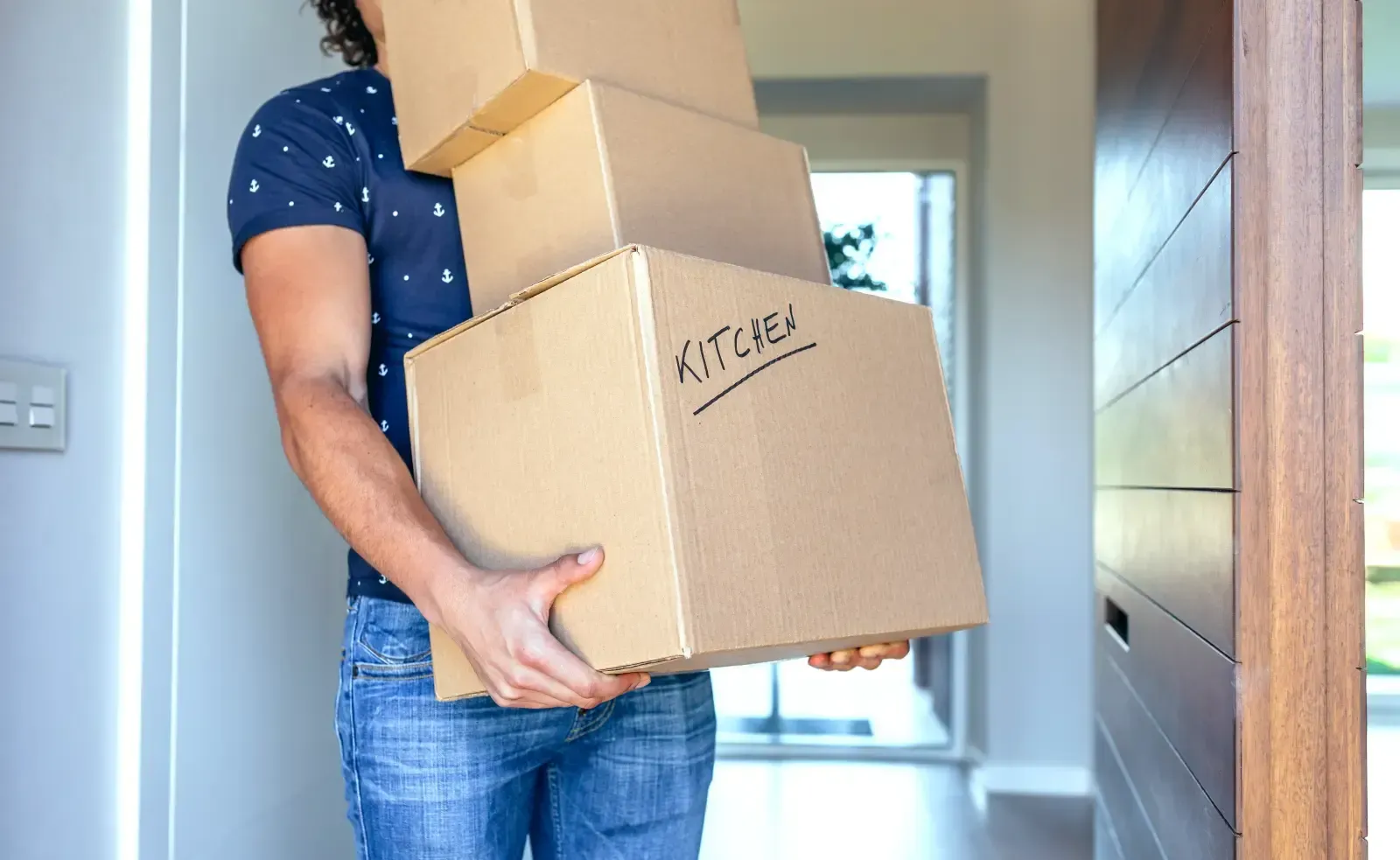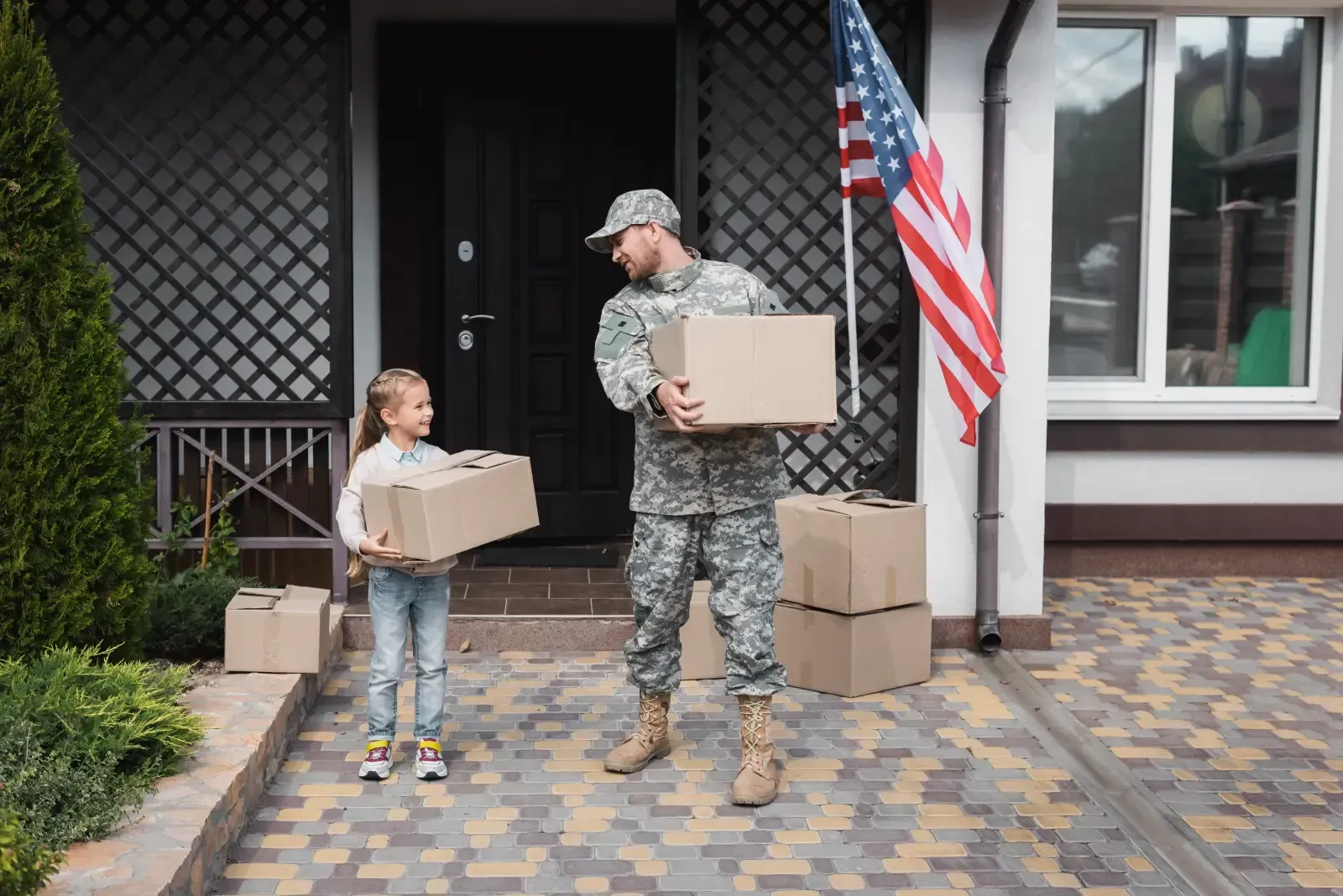The kitchen is often considered the heart of the home – and unfortunately, it's also the most challenging room to pack when moving! With fragile dishes, bulky appliances, oddly shaped items, and everything from sharp knives to sticky spices, learning how to pack kitchen items for moving can feel overwhelming.
But don't worry – at Stewart Moving & Storage, we've packed thousands of kitchens over our 25+ years in the moving business. We've learned exactly what works (and what doesn't!) when it comes to protecting your culinary treasures during a move.
Whether you're moving across town or across the country, these proven strategies for how to pack your kitchen for moving will help ensure your dishes, appliances, and favorite cooking tools arrive safely at your new home. Let's turn this daunting task into a manageable, systematic process!
Learn more:
- A Checklist for Virginia Residency Requirements 2025
- Change of Address Checklist 2025: Who to Inform When You Move to a New Address?
- Top 10 Safest Cities in Virginia

Prepare Necessary Boxes and Packing Supplies
Before you pack a single plate, gathering the right supplies is crucial for protecting your kitchen items during the move. Kitchen packing requires specialized materials because you're dealing with fragile, heavy, and oddly shaped items.
Essential packing supplies for kitchens:
Boxes
- Small boxes (1.5 cubic feet): Perfect for heavy items like canned goods, small appliances, and dishes
- Medium boxes (3 cubic feet): Ideal for pots, pans, and lightweight kitchen gadgets
- Dish pack boxes: Specially designed with thicker walls and dividers for fragile items
- Wardrobe boxes: Great for storing brooms, mops, and other tall cleaning supplies
Packing materials
- Bubble wrap: Essential for protecting fragile glassware and delicate items
- Packing paper: Clean newsprint that won't leave ink stains on your dishes
- Foam padding: Extra protection for extremely fragile or valuable items
- Dish dividers: Cardboard inserts that separate plates and bowls
- Packing tape: Heavy-duty tape that can handle the weight of kitchen items
Other tools
- Permanent markers for clear labeling
- Tape dispensers to speed up the packing process
- Box cutters for opening supply packages
- Measuring tape to ensure appliances fit in boxes
Pro tip: Don't try to save money with used, worn boxes or old newspapers for wrapping. Kitchen items are often valuable and fragile – invest in quality supplies to protect them properly. The cost of good packing materials is far less than replacing broken dishes or damaged appliances!
Learn more:
- How To Move Heavy Furniture By Yourself: 19 Easy Ways & Tricks
- How to Move a Grandfather Clock Safely in 10 Simple Steps
Step 1: Get Organized
Organization is the foundation of successfully packing your kitchen for moving. A systematic approach saves time, reduces stress, and helps ensure nothing gets forgotten or damaged.
Create an inventory system:
- Take photos of your kitchen contents before packing
- Make lists of valuable items and their condition
- Note which appliances have original boxes or manuals
- Identify items that need special handling or professional packing
Gather items by category:
- Everyday dishes and glassware
- Cooking pots, pans, and bakeware
- Small appliances (coffee maker, toaster, blender, etc.)
- Pantry and food items
- Utensils and flatware
- Cleaning supplies
- Specialty items (fine china, wine glasses, expensive knives)
Set up a packing station: Choose a clear workspace near your kitchen where you can lay out supplies, wrap items, and pack boxes efficiently. Having everything in one area prevents constant back-and-forth trips and helps you work more systematically.
Plan your packing order: Start with items you use least frequently and work toward everyday essentials. This allows you to maintain some kitchen functionality during the packing process while tackling the bulk of items early.
Learn more:
- Moving an Aquarium: How to Pack and Move a Fish Tank
- How to Pack a TV for Moving Safely | TV Shipping Guide
Step 2: Declutter
Packing your kitchen for moving is the perfect opportunity to streamline your culinary collection! Kitchens tend to accumulate gadgets, dishes, and food items over time, and moving everything without evaluation is both expensive and inefficient.
Questions to ask about each item:
- Have I used this in the past year?
- Do I have duplicates of this item?
- Will this work in my new kitchen setup?
- Is it worth the cost of moving versus replacing?
- Does this item have sentimental value beyond its practical use?
Common items to consider leaving behind:
- Duplicate gadgets: Multiple can openers, vegetable peelers, or measuring cups
- Single-use appliances you rarely use: bread makers, specialty grills, or pasta machines
- Expired or nearly expired food items: Spices, canned goods, or pantry staples
- Worn-out cookware: Pots and pans with damaged non-stick surfaces or warped bottoms
- Chipped or cracked dishes: Items that are no longer safe or attractive to use
- Bulky items that don't fit your new space: Large appliances or oversized serving pieces
Smart disposal strategies:
- Donate usable items to local charities, food banks, or community kitchens
- Gift specialty items to friends or family members who will appreciate them
- Sell valuable appliances online through Facebook Marketplace or other platforms
- Host a "kitchen swap" with friends where everyone brings items they no longer need
Decluttering can reduce your kitchen moving costs by 20-30% while giving you a fresh start in your new home!
Learn more:
Step 3: Pack Some Essentials Separately
When learning how to pack kitchen items for moving, one crucial step many people overlook is setting aside essentials for immediate use. You don't want to be searching through dozens of boxes for a coffee mug on your first morning in your new home!
Create an "essentials box" with:
- Your favorite coffee mug and coffee/tea supplies
- Basic plates, bowls, and cups (one set per person)
- Essential utensils: forks, spoons, knives for eating
- One pot and one pan for basic cooking
- Can opener and basic kitchen knife
- Paper towels and basic cleaning supplies
- Disposable plates and cups as backup options
- Snacks and non-perishable foods for your first few days
Pack this box last and load it in your car, or mark it clearly as "OPEN FIRST" so movers know to make it easily accessible.
Consider a "survival kit" for moving day:
- Disposable plates, cups, and utensils
- Paper towels and wet wipes
- Bottled water and easy snacks
- Trash bags for cleanup
- Basic first aid supplies
Having these essentials readily available reduces stress and helps you feel more settled during those first hectic days in your new home.
Learn more:
Cross-Country Moving Tips: Complete Guide
Step 4: Pack Kitchen Items for Moving
Now comes the main event – actually packing your kitchen items! Each category requires specific techniques to ensure safe transport.
How to Pack Glasses and Stemware
Glassware is among the most fragile items in your kitchen, requiring extra care and attention during packing.
For everyday glasses:
- Wrap each glass individually in packing paper
- Start by placing paper inside the glass, then wrap the outside
- Use small boxes to prevent too much weight and shifting
- Place heavier glasses on the bottom, lighter ones on top
- Fill empty spaces with crumpled paper to prevent movement
For wine glasses and stemware:
- Wrap stems separately with extra padding
- Use specialty glass dividers or create individual compartments
- Pack stemware with the rim side down for stability
- Consider using the original boxes if you still have them
- Mark boxes clearly as "FRAGILE – GLASSWARE"
For valuable or antique glassware:
- Use bubble wrap instead of just packing paper
- Consider double-boxing: place wrapped items in a smaller box, then put that box inside a larger one with padding
- Take photos before packing for insurance purposes
- Consider professional packing services for extra peace of mind
Pro tip: If you have dishwasher-safe glasses, run them through a cycle before packing to ensure they're completely clean and dry. Moisture trapped during packing can cause damage during transport.
Learn more:
A List of Things We Can’t Move and Why
How to Pack Plates, Dishes, and Bowls
Dishes require careful handling to prevent chips, cracks, and breaks during your move.
For everyday dishes:
- Wrap each piece individually in packing paper
- Use the "bundle wrap" method: stack 3-4 similar plates together, then wrap the entire stack
- Place dishes on their edges in boxes (never flat) – they're stronger this way
- Use dish dividers to keep items separated
- Start with heavier pieces on the bottom, lighter on top
For fine china or special dishes:
- Wrap each piece individually with extra padding
- Use foam padding or bubble wrap for additional protection
- Place each wrapped item in its own section of the box
- Never stack fine china – give each piece its own space
- Consider using original boxes or purchasing specialty dish boxes
For bowls:
- Nest similar-sized bowls together (2-3 per bundle)
- Wrap the nested set as one unit
- Fill the top bowl with packing paper to prevent crushing
- Place bundles upright in boxes, not stacked
Bowl and plate packing tip: Place a layer of packing paper or bubble wrap between each layer of dishes in the box for extra protection.
Finding a mover near you? Learn more about average cost of some moving services:
- How Much Do Short Distance Movers Cost?
- Average Cost of Cross-Country Movers
- Interstate Moving Costs 2025: How Much Does It Cost and How to Lower?
How to Pack Kitchen Appliances
Small appliances present unique challenges due to their weight, electrical components, and odd shapes.
For small countertop appliances:
- Clean thoroughly and ensure they're completely dry before packing
- Use original boxes when possible – they're designed specifically for the appliance
- If you don't have original boxes, wrap in bubble wrap and use appropriately sized boxes
- Remove any detachable parts and pack them separately with padding
- Keep all cords and accessories together in a labeled bag
For larger appliances (if you're moving them):
- Consult manufacturer instructions for moving preparation
- Disconnect and properly drain water lines for refrigerators and dishwashers
- Secure doors and drawers with tape or rope
- Use furniture pads and professional equipment for safe transport
- Consider hiring professionals for large or complex appliances
Special considerations:
- Electronics with displays: Use extra padding around screens and control panels
- Appliances with glass components: Wrap glass parts separately with bubble wrap
- Items with removable pieces: Pack attachments in the same box when possible
Learn more:
Why Hire a Moving Company?
How to Pack Pantry Items
Pantry items require careful consideration of weight, expiration dates, and potential spills.
For canned goods:
- Use small, sturdy boxes to manage weight
- Pack cans upright to prevent rolling and denting
- Group similar items together for easier unpacking
- Check expiration dates – don't move expired items
For dry goods (flour, sugar, rice, etc.):
- Transfer opened items to sealed containers or zip-lock bags
- Pack in waterproof containers when possible
- Use small boxes to keep weight manageable
- Place heavier items at the bottom of boxes
For spices and seasonings:
- Check expiration dates – spices lose potency over time
- Secure lids with tape to prevent spilling
- Pack in small boxes with plenty of padding
- Consider using plastic bins for easy identification and spill protection
Items to avoid moving:
- Opened perishables that won't survive the move
- Flammable items like cooking oils (check with your moving company)
- Items that might attract pests
- Anything past its expiration date
Learn more:
How to Hire An Interstate Moving Company: Steps to Choose a Mover
How to Pack Pots and Pans
Cookware is typically heavy and oddly shaped, requiring strategic packing techniques.
For pots and pans:
- Nest similar-sized items together to save space
- Place packing paper or dish towels between nested pieces to prevent scratching
- Use medium-sized boxes to keep weight manageable
- Fill empty spaces with kitchen towels or other soft items
- Pack lids separately or nest them with appropriate pots
For non-stick cookware:
- Place packing paper or cloth between stacked pieces to protect coating
- Avoid using bubble wrap directly on non-stick surfaces (it can leave marks)
- Consider using the original packaging if you still have it
For cast iron or heavy cookware:
- Use small boxes to keep the weight reasonable for movers
- Wrap each piece individually if they're valuable or well-seasoned
- Consider the weight limit – cast iron can make boxes extremely heavy
How to Pack Serving Utensils and Flatware
Utensils and flatware require organization and protection to prevent damage and loss.
For everyday flatware:
- Keep sets together by wrapping in bundles
- Use rubber bands or zip-lock bags to keep pieces organized
- Wrap bundles in dish towels for padding and easier unpacking
- Pack in small to medium boxes with other lightweight items
For sterling silver or valuable flatware:
- Wrap pieces individually or in small bundles
- Use anti-tarnish cloth or paper if available
- Pack in a secure, clearly labeled box
- Consider taking valuable silverware with you personally rather than on the moving truck
For large serving pieces:
- Wrap individually in packing paper or bubble wrap
- Pack in boxes with good padding to prevent movement
- Group similar items together when possible
Learn more:
How to Pack Knives
Kitchen knives require special attention for both safety and blade protection.
For kitchen knives:
- Wrap blades in cardboard or use knife guards
- Bundle similar knives together with rubber bands
- Pack in a clearly labeled box away from other fragile items
- Never pack loose knives – always secure blades first
For expensive or professional knives:
- Use individual knife guards or wrap in several layers of cardboard
- Consider using a knife roll or case if you have one
- Pack separately from other kitchen items
Safety tip: Always label boxes containing knives clearly and warn anyone handling them about the contents.
How to Pack Food Items
Food items require careful consideration of perishability, weight, and potential for attracting pests.
For non-perishable foods:
- Check expiration dates and donate items you won't use soon
- Pack in sealed containers or zip-lock bags to prevent spills
- Use small boxes to manage weight
- Group similar items together
For refrigerated and frozen items:
- Plan to use these up before moving day
- Consider donating unopened items to a food bank
- Never pack perishable items with your household goods
For specialty or expensive food items:
- Pack valuable items (expensive oils, vinegars, specialty ingredients) with extra care
- Use bubble wrap for glass containers
- Consider taking these items with you in your car
Learn more about our moving services:
- Long-Distance Movers | Reliable Long-Distance Moving Company
- Interstate Moving Services | Cross-State Mover
- Cross-Country Movers | Affordable and Reliable Moving Company
Step 5: Secure and Label Your Boxes
Proper sealing and labeling are the crucial final steps when packing your kitchen for moving.
Securing boxes:
- Use high-quality packing tape on all seams
- Apply tape in an "H" pattern on the bottom for extra strength
- Don't overfill boxes – they should close easily without bulging
- Test lift each box – if it's too heavy for you, it's too heavy for safe moving
Labeling strategies:
- Room designation: Clearly mark "KITCHEN" on all sides
- Contents description: "Kitchen – Wine Glasses" is more helpful than just "Kitchen"
- Handling instructions: "FRAGILE," "HEAVY," or "THIS SIDE UP" as needed
- Priority level: Mark essential boxes as "OPEN FIRST"
- Box numbers: Number boxes and keep an inventory list
Color-coding system: Consider using colored tape or stickers for different types of items:
- Red for fragile items
- Green for everyday essentials
- Blue for appliances
- Yellow for food items
Final packing tips:
- Take photos of how you packed valuable items for insurance purposes
- Keep a master list of box contents
- Pack a detailed inventory of valuable items separately
- Consider GPS tracking for boxes containing very valuable items
Learn more:
How Much Does It Cost On Average To Move A House (3 Bedroom)
FAQs About How to Pack Your Kitchen for Moving
What is the best way to pack kitchen items when moving?
The best approach is systematic organization: start by decluttering, gather proper supplies (dish packs, bubble wrap, packing paper), pack items by category, and use appropriate techniques for each type of item. Pack fragile items with extra padding, keep heavy items in small boxes, and label everything clearly. Most importantly, start early and don't rush the process – careful packing prevents damage.
How should I pack pots and pans when moving?
Pack pots and pans by nesting similar sizes together with packing paper or dish towels between them to prevent scratching. Use medium boxes to keep weight manageable, and fill empty spaces with soft items like kitchen towels. For non-stick cookware, use extra protection between pieces and avoid bubble wrap, as it can leave marks.
How soon before moving should I start packing?
Start packing your kitchen 2-3 weeks before your move date, beginning with items you use least frequently, like specialty appliances, fine china, and entertaining pieces. Leave everyday essentials for the final week, and pack an essentials box with items you'll need immediately in your new home. Starting early allows for careful, methodical packing rather than last-minute rushing.
How many boxes are needed to pack a kitchen?
Most average kitchens require 15-25 boxes, depending on the kitchen size and how much you're moving. You'll typically need 8-12 small boxes for heavy items (dishes, canned goods), 4-6 medium boxes for pots and appliances, 2-3 dish pack boxes for fragile items, and several specialty boxes for large appliances. It's better to have too many boxes than too few – unused boxes can always be returned.



